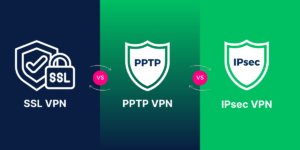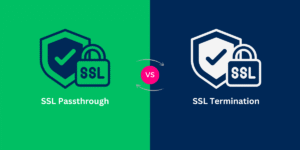What’s the Difference Between Network Security and Application Security
Network Security and Application Security are both critical components of an organization’s overall cybersecurity strategy, but they address different aspects of security.
Network security focuses on protecting the infrastructure and communication channels that connect devices and users within an organization. This includes firewalls, intrusion detection/prevention systems, and VPNs. The goal of network security is to prevent unauthorized access, detect and mitigate threats, and ensure the integrity of the network.
In contrast, application security focuses on securing the software applications and web-based systems that employees and customers use. This involves techniques like input validation, secure coding practices, and vulnerability management. The goal of application security is to identify and remediate vulnerabilities that could allow attackers to exploit the application itself.
Effective cybersecurity requires a balanced approach that addresses both network and application security. Organizations need to protect the underlying infrastructure as well as the software running on that infrastructure. By understanding the differences between these two security disciplines, businesses can develop a comprehensive security strategy to mitigate risks across the entire IT environment.
Key Takeaways
- Network security aims to protect the underlying infrastructure, such as routers, switches, and firewalls, while application security safeguards software vulnerabilities.
- Network security utilizes tools like firewalls, IPS/IDS, VPNs, and proxies, while application security uses input validation, authentication, encryption, and fuzzing.
- Network security focuses on perimeter defense and blocking external threats, while application security emphasizes internal risks and safe coding practices.
- Effective cybersecurity requires implementing controls at multiple levels, combining both network protections and secure application design.
- DDoS attacks, malware, and insider threats are the main network security threats, while injection attacks, broken authentication, and sensitive data exposure are the top application risks.
- Various laws and compliance standards, such as HIPAA, PCI DSS, and SOX, mandate controls for network and application-layer security.
Network Security vs Application Security: A Quick Comparison
Here is a comparison table of Network Security vs Application Security:
| Feature | Network Security | Application Security |
|---|---|---|
| Focus | Protecting the network infrastructure | Protecting web applications and their associated data |
| Threats | Network-based attacks (e.g., DDoS, port scanning, malware) | Application-layer attacks (e.g., SQL injection, cross-site scripting, session hijacking) |
| Techniques | Firewalls, VPNs, intrusion detection/prevention systems | Input validation, output encoding, secure coding practices, web application firewalls |
| Scope | Entire network, including routers, switches, servers, etc. | Specific web applications and their components |
| Monitoring | Network traffic, system logs, and network device configurations | Application logs, web server logs, and application-specific data |
| Compliance | Adherence to network security standards (e.g., NIST, PCI DSS) | Compliance with application security standards (e.g., OWASP, SANS) |
| Vulnerability Management | Patching network devices and operating systems | Identifying and addressing vulnerabilities in web application code |
| Access Control | User and device-level access management | Application-specific user authentication and authorization |
| Encryption | Securing network communications (e.g., SSL/TLS) | Encrypting sensitive data within the application |
| Incident Response | Identifying and responding to network-level incidents | Detecting and responding to application-level security incidents |
| 11. Governance | Network security policies and procedures | Application security policies, secure software development lifecycle |
| 12. Testing | Network penetration testing, vulnerability scanning | Web application security testing (e.g., static code analysis, dynamic testing) |
Basic Overview of Network Security
Network security refers to the policies, controls, and tools designed to protect an organization’s IT environment’s underlying infrastructure. This includes safeguarding the network perimeter, securing internal network traffic, and defending critical network elements like routers, switches, firewalls, and DNS servers.
Key goals of network security include:
- Protecting servers, endpoints, and network services from external threats
- Preventing malware, ransomware, and malicious code from spreading internally
- Securing the network perimeter with firewalls and access controls
- Ensuring the availability of network resources and preventing DDoS attacks.
- Enforcing security policies for internal network traffic and user access
- Identifying and blocking suspicious inbound and outbound traffic
Basic Overview of Application Security
Application security, on the other hand, focuses on protecting software vulnerabilities that attackers could exploit to breach systems and data. This involves identifying, fixing, and preventing security flaws in web apps, APIs, microservices, mobile apps, databases, and other application components.
The goals of application security involve:
- Detecting and remediating vulnerabilities like SQLi, XSS, and command injection
- Instituting input validation and sanitization to block malicious input
- Implementing strong authentication, access controls, and encryption
- Enforcing secure coding best practices during development
- Performing extensive testing like SAST, DAST, and fuzzing
- Securing application infrastructure like servers, containers, and APIs
While network security takes a perimeter-focused view, application security adopts an internal, data-centric approach tailored to the unique risks facing business software, applications, and platforms.
The Relationship Between Network Security vs Application Security
Network security and application security are closely aligned disciplines that serve complementary purposes. Network security provides the essential first layer of defense by controlling access, blocking known threats, and securing the foundational infrastructure. Application security builds on this by mitigating vulnerabilities within the business logic and inputs/outputs of software that could still enable attacks against underlying resources.
Some key ways network security and application security work together include:
- Defense in depth: Network protections prevent basic attacks while focused application measures counter sophisticated application-specific exploits
- Risk reduction: Combining network monitoring and application scanning reduces avenues of attack.
- Access controls: Network authentication integrates with application identity management to protect access.
- Auditing: Network traffic logs combined with application logs provide full visibility into events.
- Incident response: Security teams leverage network and application data to identify, contain, and remediate threats
- Compliance: Controls at both the network and software levels help meet legal obligations for data security
Key Differences Between Network Security and Application Security
While network security and application security work closely together, they have some distinct differences in their strategies and implementations:
Threat Vectors
- Network security focuses on external threats like DDoS attacks, malware payloads, man-in-the-middle attacks, and packet sniffing.
- Application security prioritizes internal risks like injection attacks, improper authentication, misconfigurations, insecure APIs, and vulnerabilities in application logic or source code.
Defensive Measures
- Core network security tools include firewalls, intrusion detection/prevention systems (IDS/IPS), VPNs, network access controls, and network monitoring.
- The main application security technologies are web application firewalls (WAF), static/dynamic testing, runtime application self-protection (RASP), verification tools, and application hardening.
Security Testing
- Network penetration testing evaluates perimeter defenses by mimicking external attacker behaviors and techniques.
- Application penetration testing targets software vulnerabilities using approaches like fuzzing, static analysis, and dynamic analysis.
Security Scope
- Network security focuses on message protocols, inbound/outbound traffic, network perimeters, and protecting infrastructure.
- Application security revolves around business logic, data flows, APIs, users, and application-specific processes.
Security Team
- Network security operations center (SOC) analysts monitor networks, respond to events, and protect infrastructure.
- Application security engineers assess software, remediate coding flaws, and enforce best practices for developers.
Compliance Mandates
- Network security controls help meet regulations for data protection, privacy, and information security, such as HIPAA and PCI DSS.
- Application security measures like input validation and WAFs support compliance with laws like SOX that emphasize internal application controls.
Top Threats and Attacks
To fully understand network security and application security, one needs to look at some of the top threats that impact each area.
Here are key attacks and vulnerabilities that security teams defend against:
Major Network Security Threats
- Distributed Denial of Service (DDoS): Overwhelms networks and servers by flooding them with bogus requests from a botnet, disrupting connectivity and availability.
- Man in the Middle (MitM): Intercepts communications between two parties and eavesdrops or alters traffic, enabled by unencrypted connections.
- Malware Infections: Spreads malware payloads like viruses, worms, spyware, and ransomware to endpoints via infected websites, files, removable media, and vulnerable services.
- DNS Poisoning: Manipulates DNS name servers to redirect users to fake, compromised websites to steal data or credentials.
- Insider Threats: Legitimate internal users leverage access and knowledge to steal or damage data and systems intentionally.
Top Application Security Threats
- Injection Attacks: Inserts malicious code or commands into application inputs and queries to access or destroy data. Examples are SQLi and OS command injection.
- Broken Authentication: Exploits weak authentication to gain unauthorized access by brute force, stolen credentials, default accounts, and other techniques.
- Sensitive Data Exposure: Gains access to weakly protected sensitive data like financial information and healthcare records through lack of encryption and access controls.
- XML External Entities (XXE): Abuses XML parsers accepting external entities to read system files, execute commands, or perform denial of service.
- Broken Access Control: Accesses unauthorized functions and data by exploiting misconfigured access rules, directory traversal, and permissions errors.
Major Compliance Standards
Various laws and regulations related to data security, privacy, and IT governance mandate controls relevant to network security and application security. Adhering to these compliance standards is crucial for organizations that handle sensitive data such as healthcare information, financial records, and personal data. These standards serve as a foundation for effective data governance while ensuring systematic protection of business-critical information.
Here are some major regulations driving network and application security controls:
- HIPAA: Requires healthcare organizations to implement physical, network, and application controls around patient health information.
- PCI DSS: Payment card processors must meet requirements for securing networks, handling applications for card data, encrypting, access controls, and ensuring code security.
- SOX: Mandates internal financial application controls, access management, and change control processes impacting application security.
- GDPR: Broad privacy regulations necessitate network segmentation, encryption, and access controls along with secure code practices.
- FISMA/NIST provides cybersecurity standards for US Federal agencies, including network and application protections per risk level.
- OWASP Top 10: Provides best practices for identifying and mitigating the top application vulnerabilities. While not a formal regulation, it represents application security standards.
These examples demonstrate how various laws and compliance mandates require organizations to implement coordinated defenses spanning their networks, applications, data, and users.
Best Practices for Application Security
While network security relies on hardened perimeters, advanced firewalls, and threat monitoring, application security revolves around validating inputs, securing software code, and protecting application infrastructure.
Here are some best practices for implementing comprehensive application security:
- Perform extensive static and dynamic application testing using SAST, DAST, IAST, and RASP to find and fix vulnerabilities.
- Conduct application penetration tests mimicking real-world attacks against apps.
- Enable input validation and sanitization on all front-end and API inputs to block malicious data.
- Practice secure coding techniques like threat modeling, use of frameworks, peer code reviews, and remediation of findings.
- Minimize sensitivity data collection and exposure through encryption, tokenization, and access controls.
- Implement identity, access, and authentication controls with mechanisms like SSO, 2FA, and session management.
- Separate development, test, and production environments to prevent access to live data during coding.
- Activate application logging and monitoring to detect potential attacks and anomalies.
- Establish an application security training program mandated for all developers to learn secure coding practices.
Final Thoughts
In conclusion, defending modern IT environments requires a multifaceted approach combining network monitoring, application protections, and end-user policies. Network security provides essential safeguards for infrastructure, while application security counters internal risks targeting data flows and software.
As threats rapidly evolve, organizations must leverage both disciplines using risk-based models tailored to their unique assets and vulnerabilities. Robust application security integrated with network defenses, access controls, and secure coding delivers the in-depth protection required in today’s threat landscape.
Frequently Asked Questions
What is the main difference between network security and application security?
The key difference is that network security aims to protect underlying IT infrastructure like servers, routers, and endpoints, while application security focuses on securing vulnerabilities and flaws within software code and applications.
Which threats does network security protect against?
Network security helps defend against external threats, such as DDoS, malware, man-in-the-middle attacks, and threats that originate from outside the network perimeter.
What are some examples of application security controls?
Core application security measures include input validation, identity and access management, encryption, static and dynamic testing, web application firewalls, and runtime application self-protection.
What are the top application security risks?
Major application vulnerabilities include injection attacks, broken authentication, sensitive data exposure, broken access control, security misconfigurations, cross-site scripting (XSS), and insecure APIs.
Does network security or application security hold more responsibility for access controls?
Network security manages network-level access via firewalls, network segmentation, and device monitoring. Application security governs access within software, such as user identity management and entitlements. Both are critical for a zero-trust model.
How can application security help meet compliance with laws like HIPAA and PCI DSS?
Application security controls, such as input sanitization, encryption, access management, and testing, help protect sensitive customer and patient data as required by these regulations.
Do network security and application security require separate teams?
Not necessarily. While they are distinct disciplines, many organizations rely on a unified cybersecurity team with subgroups specializing in network protections and application defenses based on expertise.
How often should organizations conduct application security testing?
Application testing should be ongoing, both during initial development and periodically after deployment. This includes static testing, dynamic testing, penetration testing, and the use of capabilities like runtime application self-protection.
Should application security be part of the software development lifecycle?
Absolutely. Building in application security from initial design through development, testing, and deployment results in more secure software. Security should be baked into the entire SDLC.

Priya Mervana
 Verified Web Security Experts
Verified Web Security Experts
Priya Mervana is working at SSLInsights.com as a web security expert with over 10 years of experience writing about encryption, SSL certificates, and online privacy. She aims to make complex security topics easily understandable for everyday internet users.



